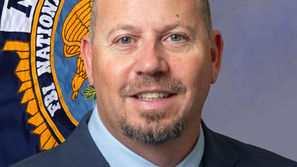Opinion: Early primaries bring dropouts
- Tom Elias
- Mar 11, 2020
- 3 min read
In a simple world where every election contest involves two contestants, early voting is terrific. Not this month
It’s plain why things have long gone well for early voting in November runoff elections where the state’s top two “jungle primary” always puts the primary election’s top two vote-getters into runoffs for every state office.
Other electoral choices like ballot propositions and runoff races for city and county offices also don’t change during the month before the fall vote.
While November presidential choices can involve multiple parties, the two major parties always choose their nominees long before mail ballots go out a month or so before the vote. Which explains why early voting works just fine in the fall.
Not so much in a primary.
Early primaries like this year’s in California can be very different. Because this state doesn’t make all the choices during the presidential primary season, the field of candidates can change considerably during the time between when ballots are printed two to three months before Election Day, and their mail-out date.
This reality exposed a big weakness in the state’s early voting this year. Ballots were printed in December, when the Democratic presidential field included the likes of Andrew Yang, Julian Castro, Amy Klobuchar, John Delaney, Michael Bennet, Pete Buttegieg, Beto O’Rourke and Tom Steyer.
Those names were included on the 15-plus million ballots mailed to Californians Feb. 3, although some dropped out before then. They also appeared on voting machines and ballots used on Election Day.
Which created a host of ballots cast for candidates who departed the race either long before the vote or in the few days leading up to Election Day.
It’s the first time early voting caused significant trouble in California, where a preliminary version of today’s system began in the early 1980s, when absentee ballots became available to anyone requesting one rather than only to folks who knew they’d be away on the official voting day.
In their first statewide use, easily available mail ballots helped Republicans defeat Democratic Los Angeles Mayor Tom Bradley for governor in 1982, giving the job to Republican George Deukmejian despite polls predicting an easy Bradley win.
Democrats quickly caught on. They now see early voting as a means to increase turnouts — and it’s a political truism that the larger the vote, the better Democrats will do. That’s why the Democrats who dominate Sacramento mandated motor-voter, where voter registration is easy for U.S. citizens getting drivers licenses.
They also set up pre-registration for 16- and 17-year-olds, plus same-day voter registration for adults. And California’s newest voting system, used this time in 15 counties, encouraged early voting not only by mail, but at voting centers open almost two weeks before Election Day.
It’s a system designed to make voting as easy as possible, Democrats believing the larger numbers produced will help them and hurt Republicans. It’s also the complete opposite of the voter limitations set up by Republican-controlled legislatures in more than 20 other states.
But a lot of Democratic voters now find themselves resenting the system set up by lawmakers they elected, which produced more than 4 million early votes. That’s because — if polling in the week before the primary was accurate – at least 12 percent to 15 percent of those early ballots favored Minnesota Sen. Klobuchar, former South Bend, IN, Mayor Buttegieg or financier Steyer.
Some of those voters would have liked to take a mulligan and vote over again once their candidates dropped out shortly before Election Day. But they could not.
Since all the dropouts were among the Democrats’ moderate candidate grouping, votes they got very likely would have gone to former Vice President Joseph Biden if voters had known who would quit. This greatly handicapped Biden’s eventual performance in California, where he finished a distant second to the far more radical Vermont Sen. Bernie Sanders.
It represents the first time early voting in California likely misrepresented some voters’ eventual Election Day preferences. Which may produce more tinkering with California’s voting system before the next presidential primary arrives in 2024.
• • •
Email Thomas Elias at tdelias@aol.com. His book, “The Burzynski Breakthrough, The Most Promising Cancer Treatment and the Government’s Campaign to Squelch It,” is now available in a soft cover fourth edition. For more Elias columns, visit www.californiafocus.net


























Comments